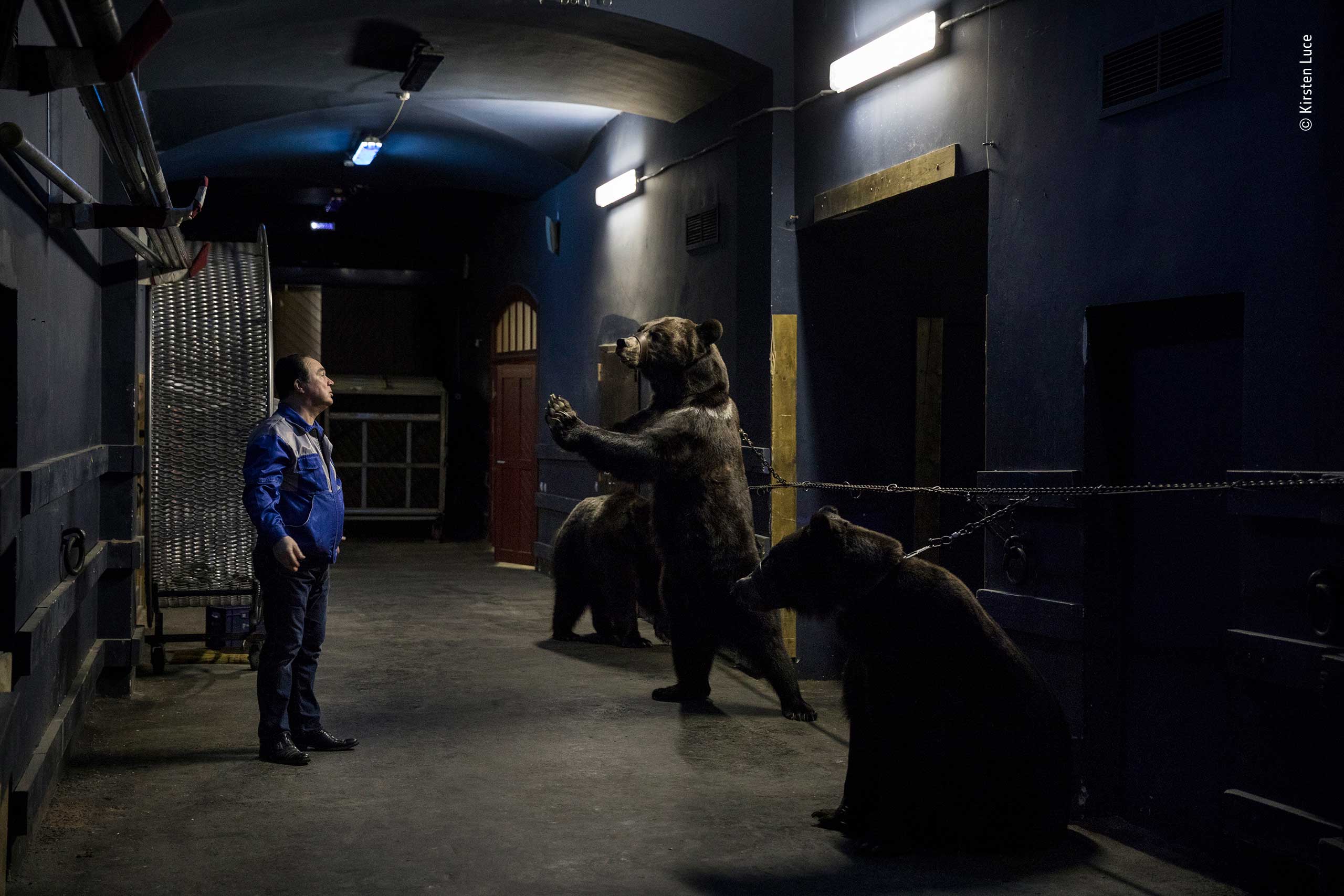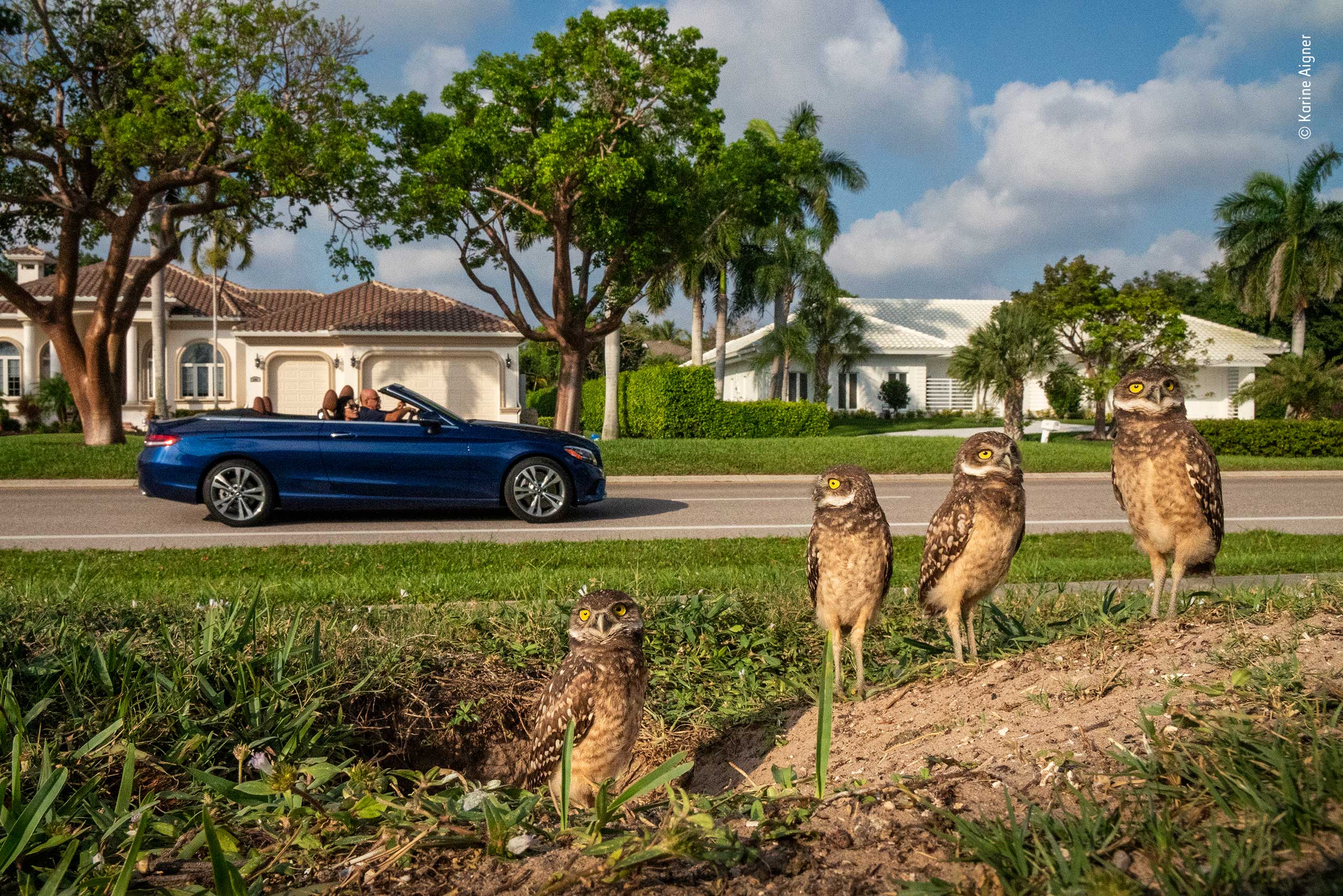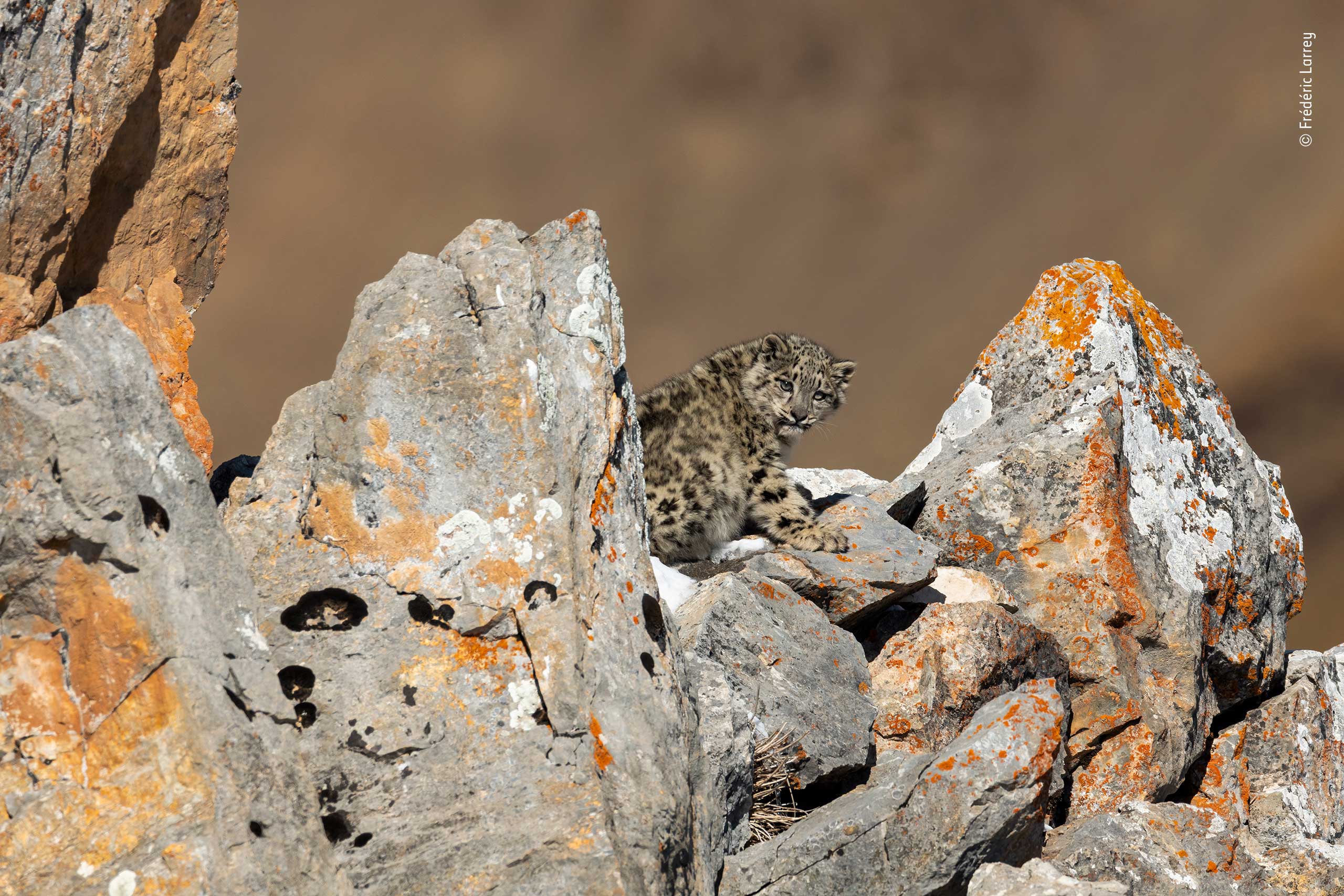
The Aplha © Mogens Trolle
undefinedWildlife Photographer of the Year: People's Choice 2020
Alison Groom
Voting is now closed for the 2020 People's Choice Award. The winner will be announced on 10 February 2021.
Lazing lizards, sleeping squirrels, underwater portraits, urban wildlife - explore the stories from this year's competition.
Turtle Time Machine (Thomas Peschak)
Thomas hoped to reflect the bounty and diversity of the seas in decades past with his image of green sea turtles off the coast of the Bahamas.

Turtle time machine © Thomas Peschak
Turtles were once abundant in these waters, but habitat loss and human consumption have threatened their survival. Today the species is classified as endangered and conservation efforts are helping to protect the populations.
In the Bahamas, an ecotourism project run by fishermen protects the turtles and attracts them with shellfish scraps for tourists to see.
The Last Goodbye (Ami Vitale)
Ami's heartbreaking image shows Sudan, the last male northern white rhino left in the world, moments before he passed away at Ol Pejeta Conservancy in northern Kenya.
Sudan spent his last years surrounded by armed guards who protected him and his two female companions 24 hours a day. Poachers, who receive a high price for rhino horn, have decimated rhino populations across Africa.

The Last Goodbye © Ami Vitale
Bushfire (Robert Irwin)
Robert's striking image is a reminder of the devastation caused by bushfires across Australia.
The area pictured, near the border of the Steve Irwin Wildlife Reserve in Cape York, Queensland, is an area of high conservation significance with over 30 different ecosystems and many endangered species.

Bushfire © Robert Irwin
The fires, which are often lit deliberately to flush out wild pigs for hunting, can burn out of control and cause destruction and devastation to huge areas.
Life Saver (Sergio Marijuán Campuzano)
While Iberian lynx populations are increasing, so too are their interactions with humans, and urban areas are continually encroaching into lynx territories.

Life Saver © Sergio Marijuán Campuzano
In 2019, over 34 lynx were run over on Spanish roads. Three days before Sergio took this photo, a two-year-old female lost her life not far from this spot.
In an effort to combat this growing mortality, Spain has increased construction of under-road tunnels which act as a lifeline and allow wildlife to cross man-made borders without risking contact with humans.
License to Kill (Britta Jaschinski)
This zebra head was confiscated at a border point in the USA, most likely because the traveller was not able to show proof that it was killed with a license.

License to kill © Britta Jaschinski
The use of a shopping trolley to transport the wild animal's head caught Britta's eye, leading her to question: wildlife or commodity?
Wildlife products continue to be traded both legally and illegally despite the suffering and long-term threats that this causes to animal populations.
A Special Moment (Oliver Richter)
European beavers play a vital role in sustaining ecosystems as they rearrange and redesign landscapes, often creating vital habitats for many different species.

A special moment © Oliver Richter
Oliver has observed these beavers, near his home in Saxony, Germany, for many years.
His image shows a family of beavers at the water's edge and reflects the love and care that adult beavers show towards their young.
Coexistence (Pallavi Prasad Laveti)
This playful image shows an Asian palm civet kitten peeping out from its hiding place in a remote village in India.

Coexistence © Pallavi Prasad Laveti
Although this kitten was orphaned, some might consider it lucky as it lives a carefree life among the company of locals who 'live and let live'.
In other parts of the world civets are used in the production of kopi luwak coffee which sees them kept in cramped, unsanitary battery cages and force-fed a diet of coffee beans.
Backstage at the Circus (Kirsten Luce)
Kirsten Luce's image shows in stark reality the conditions in which performing animals are kept. These brown bears are part of a circus in St Petersburg, forced to perform each night.

Backstage at the circus © Kirsten Luce
For bears to learn to walk on their hind legs, they are chained by the neck to a wall from a young age to strengthen their leg muscles.
Hundreds of bears live in captivity in this part of the world, forced to dance or perform as part of travelling circuses.
The Real Garden Gnomes (Karine Aigner)
These Florida burrowing owls have taken up residence in one of the multimillion-dollar neighbourhoods of Marco Island, Florida, USA.

The real garden gnomes © Karine Aigner
The owls dig their burrows underground, often in the carefuly maintained lawns of their human neighbours.
Karine's image is a welcome reminder that the spaces we inhabit, however urban, are shared.
Baby on the Rocks (Frédéric Larrey)
The Tibetan Plateau is a veritable haven for snow leopards, who are hunted and threatened with habitat loss elsewhere in the world. Here, prey is plentiful, and hunters are few.

Baby on the rocks © Frédéric Larrey
Frédéric's image shows a snow leopard cub waiting in the safety of the rocks for its mother to return from hunting. At only six months old, the cub would spend most of its time learning from its mother and copying her movements.
Bring the exhibition home
You can see all of this year's People's Choice images, alongside the other photos from the competition in the 2020 Highlights book.
Don't miss a thing
Receive email updates about our news, science, exhibitions, events, products, services and fundraising activities. We may occasionally include third-party content from our corporate partners and other museums. We will not share your personal details with these third parties. You must be over the age of 13. Privacy notice.
Follow us on social media